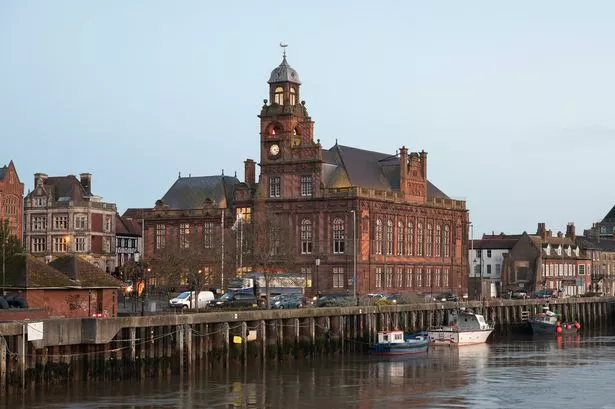The historic coastline is home to the country’s last remaining venue constructed entirely for a circus
A chilling laugh echoes through Britain’s oldest static circus building, instantly setting the tone for a thrilling performance. The audience at the majestic Hippodrome in Great Yarmouth, Norfolk, reacts with hisses and boos as Mr Mullins, the wicked fairground owner, reveals his dastardly plans to ensnare local heroes Jack Jay and Johnny Mac.
The Hippodrome stands as the nation’s last venue built solely for circus performances, its historic walls animated by the exuberance of its performers.
Ella Pickover paid a visit to the seaside town with her family and said the resort, with miles of beaches, is worth seeing out of season.
She said: “My five-year-old daughter cowers in fear watching death-defying stunts by acrobats suspended mid-air. Moments later, my nine-year-old falls back into her seat in fits of giggles over jokes meant to entertain the adults in the audience.
“We watch in awe as a contortionist squeezes herself into a small box, clap with delight at a seemingly impossible aerial stunt, and cheer loudly when doltish Johnny saves the day and stops the villainous Mullins, played by an enthusiastic James Franklin.
“After the superb show, we stroll through the belly of the building to its museum, which is home to props and posters of bygone years. The artefacts, some more than 120 years old, conjure up images of the hundreds of shows enjoyed before ours.”
In 1903, when the Hippodrome was built, Great Yarmouth was a popular summer seaside destination – and still is. But on a short break with her family, Ella was eager to discover its winter charms, reports the Express.
She said: “Our home away from home is Rose Cottage, a cosy gem tucked away in the village of Winterton-on-Sea, a 20-minute drive north along the coast from Great Yarmouth. A log burner at the heart of the snug living room is perfect for cooler evenings.
“Up to four guests can stay across the two comfortable bedrooms and four-legged friends are also welcome at the self-catering cottage, which lies just a stone’s throw from Winterton’s sandy beaches.
“At the beach, the sun kindly shines down on miles and miles of golden sand, stretching as far as the eye can see. Families play with dogs, horse riders trot along the shoreline, while crowds gather with binoculars trying to spot grey seals.”
As you wander around this stunning corner of East Anglia, you’ll stumble upon numerous significant sites. After a scrumptious Sunday roast at Branford’s restaurant in Caister-on-Sea, they noticed a small sign directing us to Caister Roman Fort.
Intrigued, they pulled over and walk into what appears to be a small park but is actually the ruins of a fort. In other parts of the world, you’d pay a pretty penny to see such an extensive display of Roman history – believed to be part of a chain of coastal forts known as the ‘Saxon Shore’ by the Romans – but here, they have the entire site to themselvess to explore at no cost.
Inspired by the area’s numerous wildlife enthusiasts, they made their way to Horsey Gap for some grey seal spotting. Throughout late autumn and winter, these shores become home to a massive colony of seals during pupping season.
They stood mesmerised as hundreds of seals lazed along the shoreline. A few played in the surf as a helpful warden shares more details about the seals at Horsey.
“There’s 250 on this groyne, around 200 on the next and I’m not sure about further on,” she said. “But it’s still early in the season.”
They only caught sight of two snow-white seal pups during our visit, but were informed that within a few weeks there would be hundreds.
A short distance away, Great Yarmouth provides all the entertainment one would anticipate at a British seaside resort. Their first port of call is the Time and Tide Museum, presenting an interactive journey through the coastal town’s history.
The museum, housed in a former fish-curing facility, chronicles the story of Great Yarmouth and its herring trade and still carries the lingering scent of a smokehouse.
Ella added: “A short distance away, Great Yarmouth offers all the frivolity that one would expect at a British seaside town. Our first stop is the Time and Tide Museum, offering an interactive look through the history of the coastal town. The museum, set in an old fish curing site, tells the story of Great Yarmouth and its herring industry and still has the lingering aroma of a smokehouse.
“Next we take a leisurely stroll though The Venetian Waterways, home to canals snaking through ornamental gardens, with interlinking walkways and islands to explore.
“Feeling adventurous, we decide to take a pedalo out on the boating lake, letting the children take it in turns to steer until a near-miss at the lake’s bubbling fountain.
“After a spot of exercise we get some lunch at the nearby four-star Imperial Hotel, taking in views from the Terrace Restaurant. We watch boats slowly chug past as we order haddock and chips with a delicious malt vinegar jam.
“After lunch we really get stuck into seaside antics, taking a stroll through the charming Merrivale Model Village before heading to the dizzy heights of the Pleasure Beach. I particularly enjoy a stomach-flipping ride on the traditional wooden rollercoaster, which opened almost a century ago.
“The children, meanwhile, are enthralled by some of the traditional fairground rides and games, and when offered the chance for “one last ride” they choose the YoYo – a merry-go-round-style ride with swings suspended in the air.”
